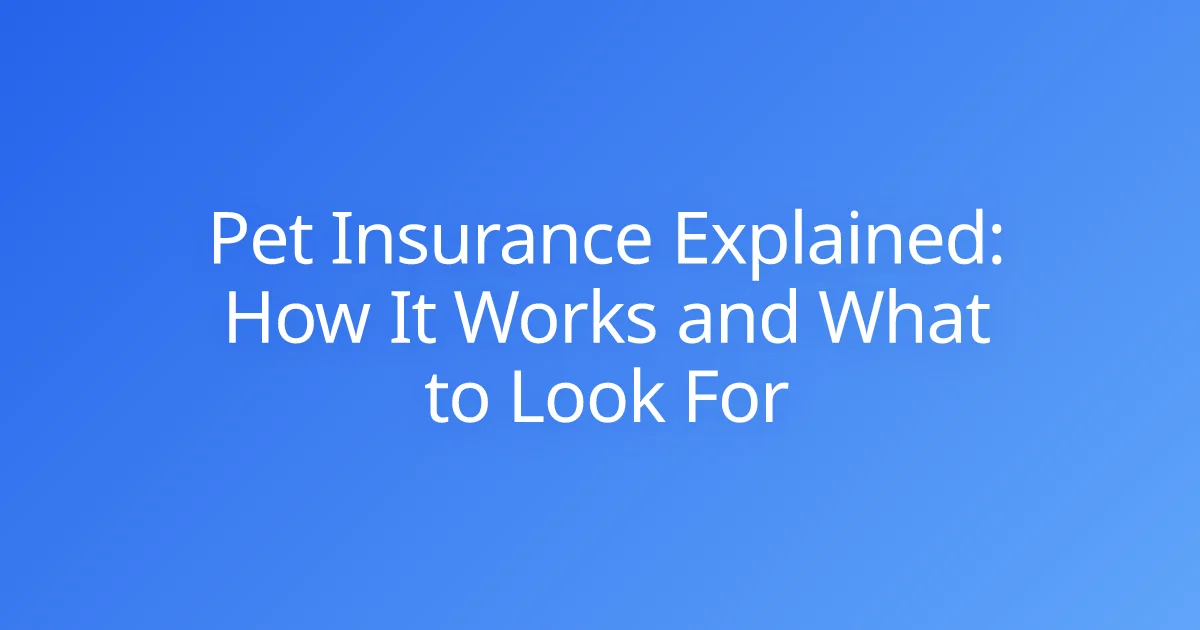Pet Insurance
Explore our pet insurance articles to learn everything you need to know.
Pet Insurance Explained: How It Works and What to Look For

Demystify pet insurance: learn how it works, explore coverage types, and discover what to look for in a policy to protect your furry family member's health and your wallet.
IE
Insurance ExpertRelated Categories
Stay Updated on Pet Insurance
Get the latest pet insurance articles delivered to your inbox.
Frequently Asked Questions About Pet Insurance
Insurance is a contract between you and an insurance company that provides financial protection against specific losses or risks. You pay a premium, and in return, the insurer agrees to cover certain costs if a qualifying event occurs. You need insurance to protect yourself from potentially devastating financial losses that could result from unexpected events like accidents, illnesses, natural disasters, or liability claims.
A deductible is the amount you pay out-of-pocket before your insurance coverage begins. For example, if you have a $500 deductible and experience a $3,000 loss, you'll pay the first $500, and your insurance will cover the remaining $2,500. Generally, choosing a higher deductible results in lower premium payments, while a lower deductible means higher premiums but less out-of-pocket expense when you file a claim.
Insurance premiums are calculated based on several factors, including: your risk profile (age, health, driving record, etc.), coverage amount and type, deductible level, location (different regions have different risk levels), claims history, credit score (in many states), and industry data on similar risks. Insurance companies use statistical models to determine the likelihood you'll file a claim and price your policy accordingly.
An insurance agent represents one or more specific insurance companies and sells policies on their behalf. They work for the insurer and are typically paid through commissions. An insurance broker, on the other hand, works for you (the client) and shops around different insurance companies to find you the best coverage and rates. Brokers typically have access to more options but may charge fees or still earn commissions from insurers.
To file an insurance claim: 1) Report the incident immediately to your insurance company through their website, mobile app, or by calling their claims department. 2) Document everything related to the incident (photos, videos, police reports, medical reports). 3) Fill out the claim forms provided by your insurer with accurate information. 4) Submit all required documentation. 5) Work with the assigned claims adjuster who will evaluate your claim. 6) Follow up regularly until your claim is resolved.